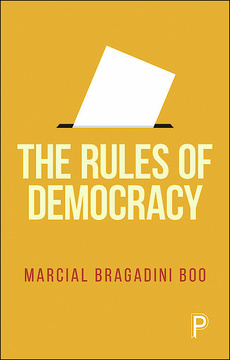Democratic Decay and Authoritarian Resurgence
By Natasha Lindstaedt
Published
May 28, 2021Page count
428 pagesISBN
978-1529210392Dimensions
240 x 172 mmImprint
Bristol University PressPublished
May 28, 2021Page count
428 pagesISBN
978-1529210385Dimensions
240 x 172 mmImprint
Bristol University PressPublished
May 28, 2021Page count
428 pagesISBN
978-1529210415Imprint
Bristol University PressPublished
May 28, 2021Page count
428 pagesISBN
978-1529210415Imprint
Bristol University PressWhy do democracies fall apart, and what can be done about it?
This book introduces students to the concept and causes of democratic decay in the modern world. Illustrating the integral link between public commitment to democratic norms and the maintenance of healthy democracies, it examines the key factors in decaying democracies, including:
• Economic inequality;
• Corruption;
• Populist and authoritarian discourse;
• Declining belief in political institutions and processes.
Drawing on real-world developments, and including international case studies, the book outlines the extent to which there is a ‘democratic recession’ in contemporary politics and shows how transnational networks and technology are impacting on this development.
“This is an essential read for all students of politics interested in the future of democracy. Lindstaedt presents a comprehensive study of a global crisis.” Anja Neundorf, University of Glasgow
“Offers a comprehensive and highly readable account of the ways in which corruption, restrictions on accountability and normative shifts have driven recent authoritarian backsliding across the globe.” Sarah Birch, King's College London
Natasha Lindstaedt is Deputy Dean and a Professor in the Department of Government at the University of Essex. She has written widely on authoritarian regimes, democracy, corruption and failed states.
The Current Landscape
Chapter 1: An Era of Autocratization? Are We Experiencing an Era of Democratic Backsliding?
Chapter 2: Entering the Grey Zone
Public Opinion and Norms
Chapter 3: Measuring and Defining Public Support for Democracy and Autocracy
Chapter 4: What Shapes Public Support for Autocratization? Political Culture, Education, Religion, Personality and Authoritarian Legacies
Chapter 5: International and Informational Sources of Authoritarian Norms
Causes and Context
Chapter 6: Globalization
Chapter 7: Corruption
Chapter 8: Authoritarian Populism
Symptoms and Processes
Chapter 9: Assaults on the Media and Civil Society
Chapter 10: Assaults on Institutions
Chapter 11: Assaults on Electoral Processes
Chapter 12: Protests and Reform
Conclusion
















